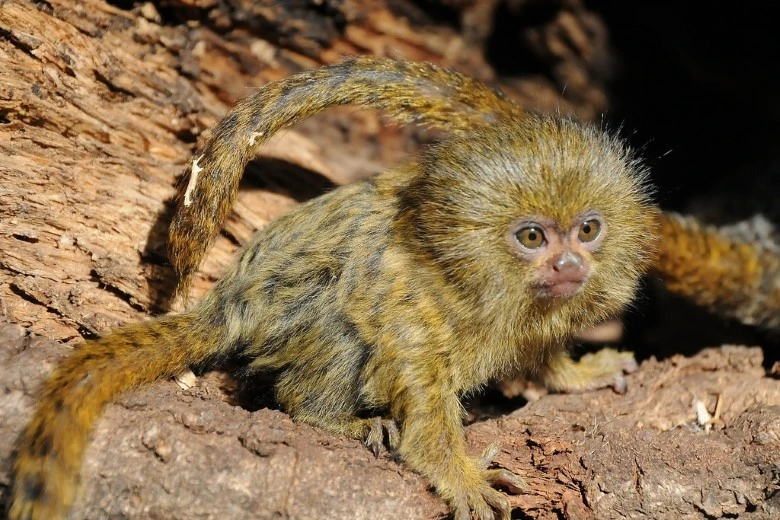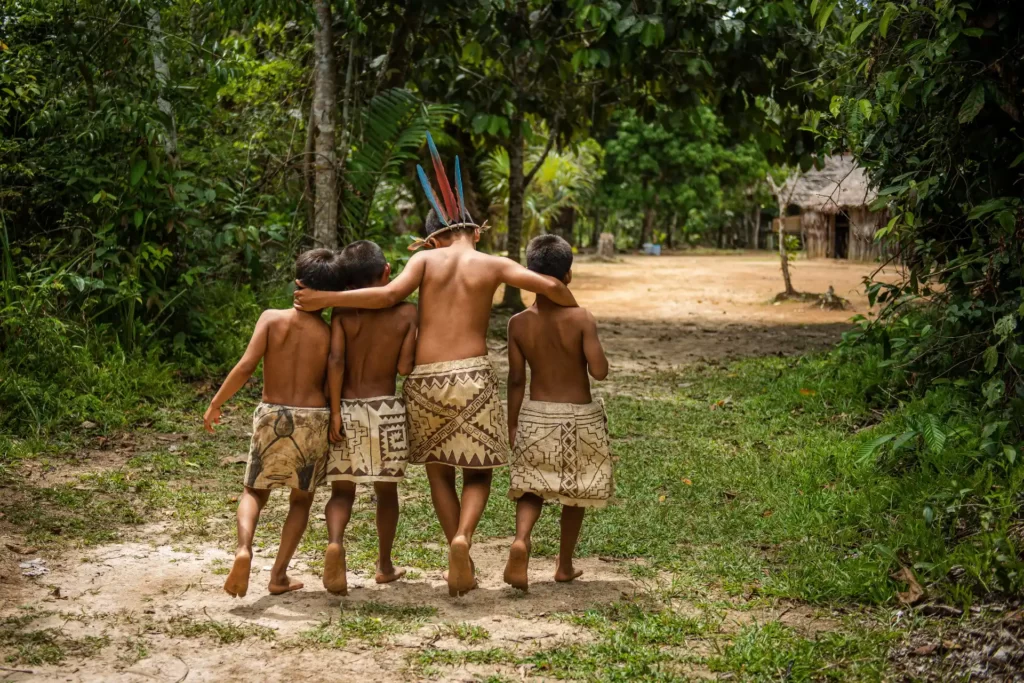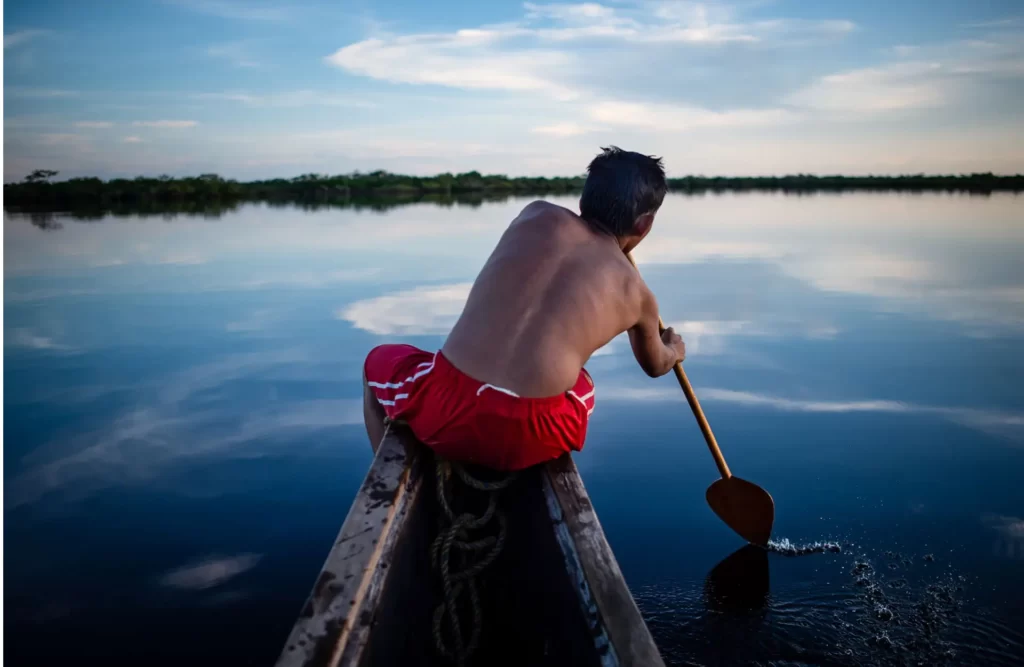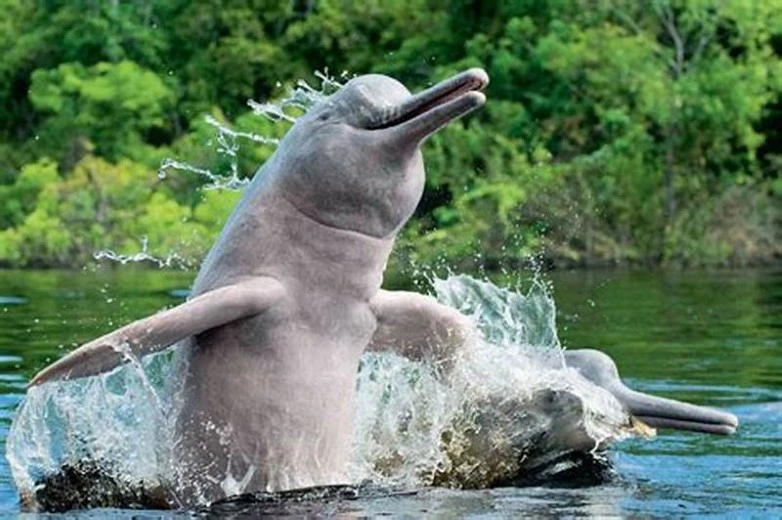
The Pacaya Samiria National Reserve protects over 20,800 km² of floodable jungle in the northern Amazon of Peru, near Iquitos. This area is an important refuge for wildlife, with more than 100 species of mammals, many of which are unique to the region. Get to know the mammals of the Pacaya Samiria National Reserve such as the pink dolphin, the jaguar, and the lion tamarin monkey, which are among the most sought-after animals by those wishing to discover the typical fauna of the Amazon in Iquitos.
The region’s tropical humid climate, with temperatures ranging from 20 °C to 33 °C and abundant rainfall exceeding 2,600 mm per year, creates a perfect environment for wildlife. In this area, you’ll find lakes, rivers, and tall forests that serve as home to many species. Below, we present a list of animals you can observe, climate information, and answers to the most common questions to help you better prepare for your adventure in Pacaya Samiria.

List of Mammals of the Pacaya Samiria National Reserve
In this protected area, more than 102 species of mammals have been identified, many of which play a key role in the natural balance of the Amazon jungle in Peru.
- Amazon pink dolphin (Inia geoffrensis): the largest freshwater dolphin in the world, highly sought after by travelers.
- Tucuxi or gray dolphin (Sotalia fluviatilis): smaller than the pink dolphin, but very active and sociable.
- Amazonian manatee (Trichechus inunguis): a peaceful herbivore that lives in lakes and calm rivers.
- Capybara (Hydrochoerus hydrochaeris): the largest rodent on the planet, easily seen near water.
- Giant river otter (Pteronura brasiliensis): a great hunter and very social, lives in groups and is fascinating to observe.
- Jaguar (Panthera onca): the most powerful predator of the Amazon and one of the hardest to spot.
- South American tapir (Tapirus terrestris): large in size, it helps disperse seeds throughout the forest.
- Squirrel monkey (Saimiri sciureus): small, agile, and curious, easily jumping from tree to tree.
- Lion tamarin monkey (Cebuella pygmaea): the smallest primate in the world, very difficult to spot due to its size.
- Night monkey (Aotus vociferans): active at night and known for its loud calls.
- Fishing bat (Noctilio leporinus): expert at catching fish near the water’s surface while in flight.
- Maguey bat (Rhynchonycteris naso): a great insect eater, helping control pest populations.
These species show just a part of the incredible mammal diversity that inhabits Pacaya Samiria, many of which are only found in this Amazon region of Peru.

Climate of the Pacaya Samiria National Reserve
The reserve has a tropical humid climate, with warm temperatures year-round and frequent rainfall, creating an ideal environment for wildlife.
- Average annual temperature: 25.4 °C.
- Average annual precipitation: 2,664 mm.
- Wettest month: March.
- Driest month: August.
- Dry season (May to October): During these months, the water level drops, allowing for more paths to be traversed and more animals to be seen on solid ground.
- Rainy season (November to April): The water level rises, forming ideal channels for navigation. These channels also allow for observing aquatic fauna, such as pink dolphins and giant otters.
Thanks to this climate and its seasonal changes, the mammals of Pacaya Samiria are able to feed, reproduce, and move freely. This makes it one of the most biodiverse areas in South America.
Frequently Asked Questions about the Mammals of the Pacaya Samiria National Reserve
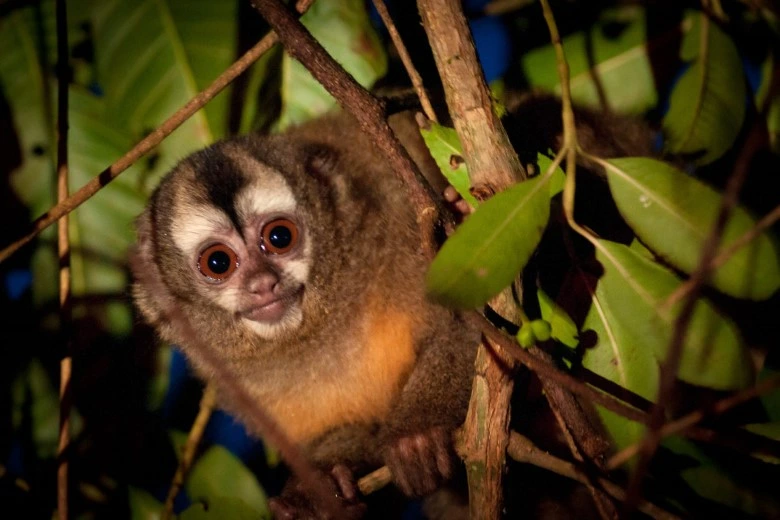
1. What is the best time to spot mammals in Pacaya Samiria?
The best season to observe terrestrial mammals is during the dry season, from May to October, when the river levels drop. During this period, it is more common to see animals like capybaras, jaguars, or tapirs resting on the shores or moving along beaches and open paths. On the other hand, during the rainy season (from November to April), it is easier to find aquatic species like pink dolphins or manatees, as the channels and rivers swell and become their primary habitat.
Both seasons have their charm, but the ideal time depends on the type of wildlife you want to observe.
2. What precautions should I take during a mammal-watching tour in Pacaya Samiria?
- Wear neutral or muted colors to avoid drawing attention or scaring the animals.
- Apply insect repellent, as there are many mosquitoes in the jungle.
- Do not feed or approach the animals, for your safety and to avoid disturbing their natural behavior.
- Always follow the guide’s instructions, as they are familiar with the area and know how to act in any situation.
- Choose reliable agencies that adhere to safety standards and environmental protection regulations.
These recommendations not only ensure your well-being during the tour but also contribute to the conservation of the mammals of the Pacaya Samiria National Reserve and their natural habitat.
3. Can I see both pink and gray dolphins on the same tour in Pacaya Samiria?
Yes, it is possible. In areas where the Pacaya and Samiria rivers meet, it is quite common to see pink dolphins. It is also common to see gray dolphins, as they share the same habitat.
They are especially active at dawn or dusk when they are more likely to be hunting for food. These times of day are ideal for watching them swim, jump, or play in the water.
4. What does the Pacaya Samiria Reserve do to protect endangered species?
The Pacaya Samiria National Reserve protects key areas where many endangered species live, such as forests, lakes, and rivers. It also has special programs to monitor and protect the animals. It conducts patrols to prevent illegal hunting and works with local communities to teach the importance of protecting nature. Thanks to these efforts, animals like the Amazonian manatee, the giant river otter, and the jaguar have been successfully protected. Today, these animals have a greater chance of survival in their natural habitat.
5. What tourism services are available for mammal watching in Pacaya Samiria?
You can find:
- Eco-cruises that last several days and navigate the rivers of the reserve.
- Night excursions, ideal for seeing animals that come out at night.
- Kayaking at dawn, allowing you to approach the wildlife without making noise.
- Lodges in the jungle that organize guided walks and responsible wildlife observation.
Each of these options offers an immersive experience with the mammals of the Pacaya Samiria National Reserve, promoting responsible ecotourism.
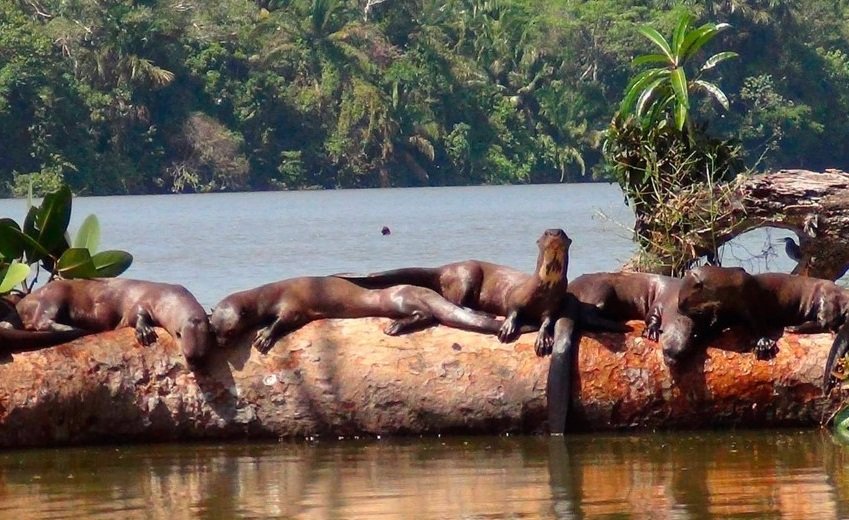
The Pacaya Samiria National Reserve is a paradise for wildlife lovers, where the most iconic mammals of the Peruvian Amazon find refuge. From playful pink dolphins to majestic jaguars, each species plays a vital role in this unique ecosystem. If you’re seeking an unforgettable adventure in Iquitos, don’t hesitate to explore this biodiversity jewel. Contact us to schedule your wildlife observation tour in Pacaya Samiria and discover why it is considered one of the most impressive destinations in the world.
Tours to the Pacaya Samiria National Reserve that might interest you:

